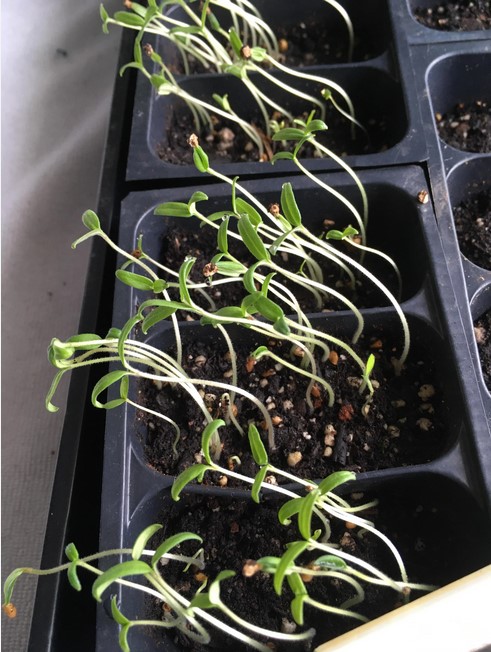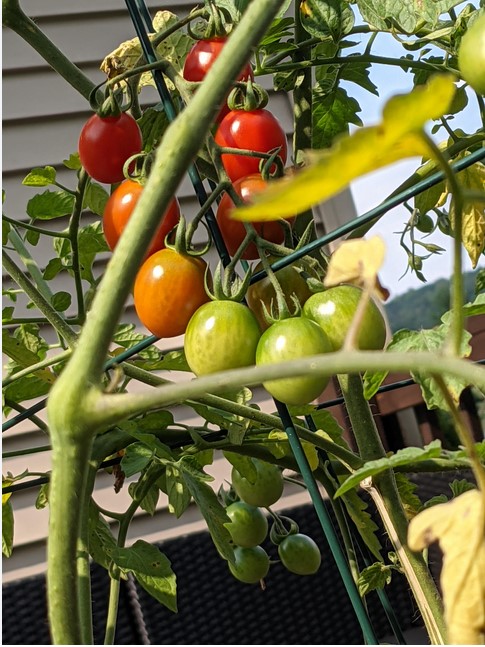If you are eager to reap the full benefits of your tomato plants in your garden, then it is essential to understand their specific sunlight requirements.
This blog post is about diving deep into the world of tomato cultivation and exploring the ideal or specific amount of sunlight that tomato plants need to thrive.
Let us now explore the amount of sunshine the tomato plants require to transform them into thriving producers.
Also, read: How To Take Care Of A Tomato Plant? [Detailed Guide]
Morning Or Afternoon Sun: Which Is Best?
Table of Contents

Several factors are also related to the ideal time for tomato plants to receive sunlight.
For ideal growth, tomato plants need a combination of morning and afternoon sun and a total of at least 6 hours per day. The key is to strike a balance between enough sunlight and to avoid excessive heat.
Morning Sun
The Morning Sun provides less-intensity sunlight without excessive heat and is usually considered the best for tomato plants. It plays a vital role in initiating plant growth and helps to reduce fungal infections that are highly likely to thrive in moist environments. It is also essential for carrying out photosynthesis.
Midday Sun
The Midday Sun is the most intense and causes overheating, so it is highly recommended to use shade or to plant trees strategically to protect them from excessive heat. It is, therefore, crucial to understand the risks associated with the midday sun and then take the required steps to mitigate those issues to yield high productivity.
Afternoon Sun
In regions with cooler temperatures, tomato plants require Afternoon Sun. It is less intense than the Midday Sun and, hence, provides less heat and also prevents overheating. The tomato plants benefit from a combination of morning and afternoon sun. So, gardeners should optimize the growth accordingly and ensure a healthy and productive harvest.
How Much Direct Sun Do Tomatoes Need Throughout The Season?

To grow into healthy plants and produce a good fruit yield, tomato plants need at least 6 to 8 hours of direct sunlight. This is the bare minimum requirement for fruit production.
However, for optimal growth and maximum production, 8 to 10 hours of direct sunlight is enough for tomato plants’ ideal development. This will, in turn, lead to maximum growth and a high yield of growth.
There are also a couple of factors that should be considered beyond the number of hours, and those are:
- Location of the tomato plants
- Climate of the region
- Tomato variety
- Monitoring
Sunlight Requirements Or Ideal Temperatures For Different Stages Of Growth
Here is a detailed breakdown of sunlight requirements during different stages of growth:
Seedling Stage
14-16 hours of indoor light per day to encourage the process of germination and initial growth.

Transplanting And Vegetative Growth Stage
Six to eight hours of direct sunlight is needed to develop strong stems and foliage.
Flowering Stage
8-10 hours of direct sun exposure to dry the morning dew and reduce the risk of fungal diseases.
Fruit Developing And Ripening Stage
Eight to ten hours of direct sunlight to prevent sunscald on ripening tomatoes.

Note: Focus on providing consistent, bright, and direct sunlight for at least 6 hours a day, along with some adjustments based on climate and potential heat stress.
Tips For Maximizing Sunlight Benefits For Growing Tomatoes

By following the below-mentioned tips, you’ll be able to maximize the sunlight benefits for your tomato plants, thereby leading to a healthy and productive growth cycle:
- Providing 6-8 hours of direct sunlight
- Placing the tomato plants strategically by observing the light patterns
- Using reflective materials to bounce more light onto the foliage and fruit
- Planting tomato plants vertically will improve the air circulation and reduce the chance of disease
- Monitoring the soil moisture to prevent overwatering and root rot
- Pruning to promote healthy growth and minimize disease
- Choosing appropriate tomato varieties
- Protecting the plants from excessive heat
Impact Of Direct Sunlight On Tomato Plants
Direct sunlight is crucial for healthy growth and productivity, and the impacts of direct sunlight on tomato plants
Photosynthesis
Direct sunlight is essential for optimal growth and fruit production. Most importantly, it is necessary for photosynthesis, which plays a significant role in fueling the plant’s growth and fruit development.
Stimulates Flowering And Fruit Production
Direct sunlight encourages flower and fruit production and also helps in the development of larger and better-quality tomatoes.
Enhances Ripening
Direct sunlight helps ripen, and consistent exposure to sunlight ensures that fruits ripen organically and evenly.
Disease Prevention
Sunlight keeps the soil surface dry and, in turn, reduces the likelihood of fungal diseases.
Heat Stress And Sunscald
Excessive and intense sunlight causes wilting and sunscald on fruits and vegetables. Also, excessive heat can damage the plant’s cellular structure.
Takeaways
Striking the right balance between too little and too much sun will make all the difference in a bountiful harvest of juicy tomatoes.
So, understand your plants’ sunlight needs and ensure the growth of healthy plants, which will, in turn, reward you with an abundance of tomatoes.
So, get ready to enjoy the fruits of your labor.
Leave a Reply